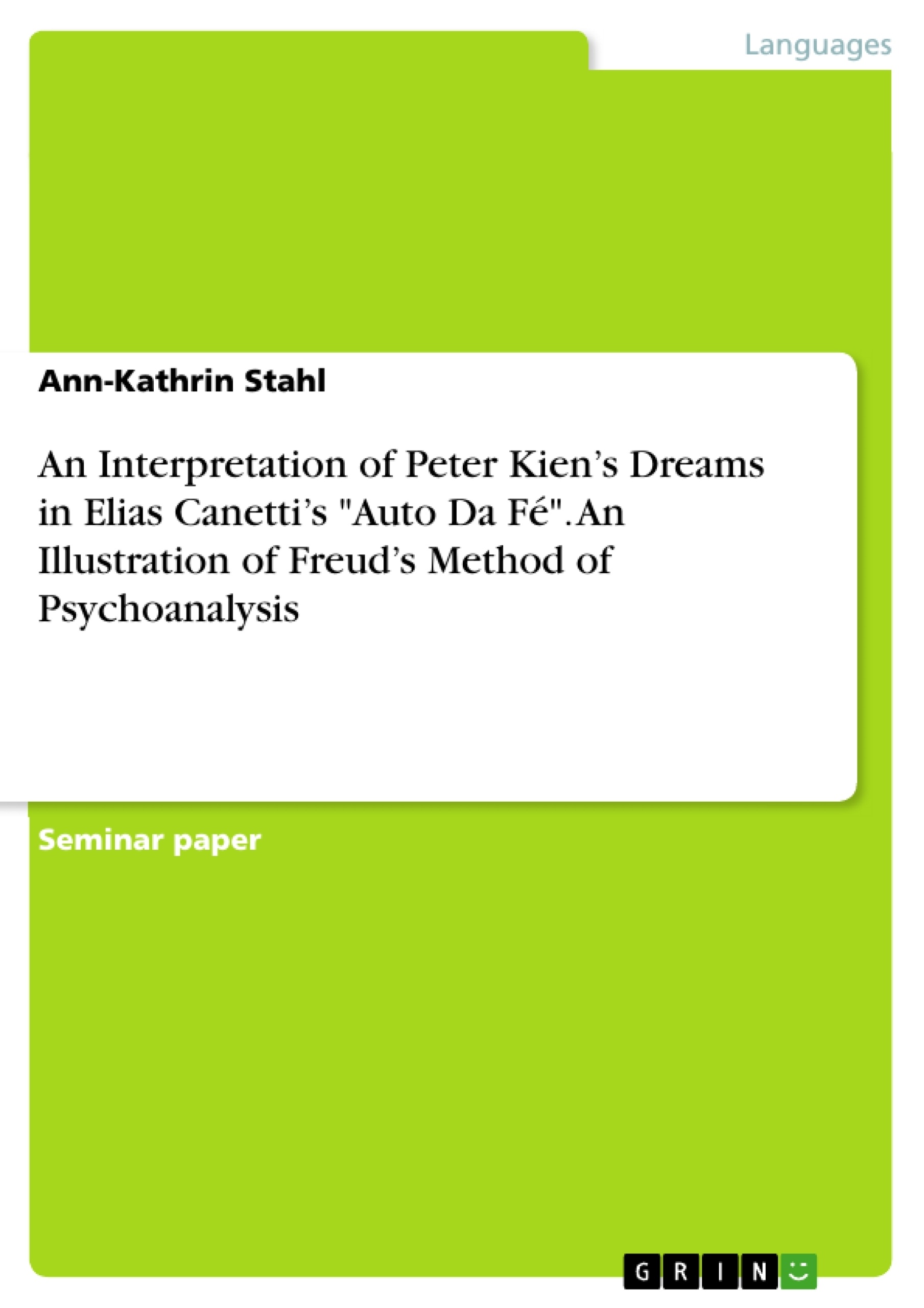The international aesthetic movement at the turn of the century is the so-called “Modern Break” or the period of literary modernism. A famous author of this movement can be found in Elias Canetti who “depicts himself as a lone traveler” (Murphy 21) and who was geographically displaced from his home in Austria while spending a significant part of his life either living or travelling through Western Europe.
His first novel is "Auto Da Fé", which was published in 1936. "Auto Da Fé" contains a number of dreams which the Austrian neurologist Sigmund Freud interpreted and analyzed in his "Interpretation of Dreams" in 1899. Consequently, this essay will demonstrate in how far Freud’s concept of psychoanalysis can be defined and which features are commonly associated with it according to Canetti and Freud.
To prove this statement, the following essay initially gives a short overview of the Freudian concept of psychoanalysis and identifies its common features. Moreover, the second part of the essay will analyze and interpret Peter Kien’s dreams in Elias Canetti’s "Auto Da Fé" with regard to psychoanalysis. The third and last part will finally sum up all the important points mentioned in this paper.
Inhaltsverzeichnis (Table of Contents)
- Freud's Method of Psychoanalysis: An Interpretation of Peter Kien's Dreams in Elias Canetti's Auto Da Fé
- The Freudian Concept of Psychoanalysis
- Interpretation of Peter Kien's Dreams in Elias Canetti's Auto Da Fé
- Conclusion
Zielsetzung und Themenschwerpunkte (Objectives and Key Themes)
This essay aims to demonstrate the application of Freud's concept of psychoanalysis in interpreting Peter Kien's dreams within Elias Canetti's novel Auto Da Fé. It explores the common features of Freudian psychoanalysis and analyzes specific dreams from the novel to illustrate the significance of dreams in understanding the protagonist's character.
- The influence of Freud's psychoanalysis on literary modernism
- The role of dreams in revealing unconscious desires and experiences
- The symbolic nature of dreams and their interpretation
- The impact of trauma on the psyche and the potential for rehabilitation through dreams
- The connection between dreams, reality, and mental illness
Zusammenfassung der Kapitel (Chapter Summaries)
The essay begins by providing an overview of Freud's theory of psychoanalysis, highlighting its key concepts and the role of dreams in revealing unconscious desires and experiences. It then delves into an analysis of specific dreams from Canetti's Auto Da Fé, focusing on Peter Kien's dream of a man and two jaguars. This analysis explores how the dream reveals Kien's inner conflicts and anxieties, connecting them to his experiences and his mental state. The essay concludes by summarizing the key points and reinforcing the significance of dreams in understanding the protagonist's character and the novel's themes.
Schlüsselwörter (Keywords)
This essay delves into the concepts of Freudian psychoanalysis, dreams, and their interpretation, using the example of Peter Kien's dreams in Elias Canetti's Auto Da Fé to explore the complex interplay between the conscious and unconscious mind, trauma, and mental illness. The key themes include literary modernism, symbolism, unconscious desires, and the impact of dreams on the human psyche.
- Arbeit zitieren
- Ann-Kathrin Stahl (Autor:in), 2014, An Interpretation of Peter Kien’s Dreams in Elias Canetti’s "Auto Da Fé". An Illustration of Freud’s Method of Psychoanalysis, München, GRIN Verlag, https://www.grin.com/document/345419




